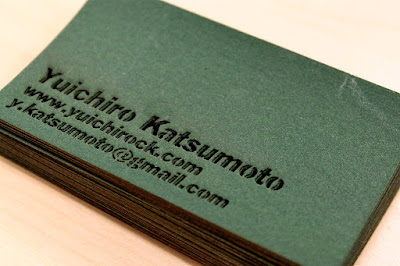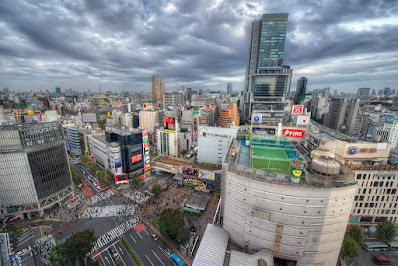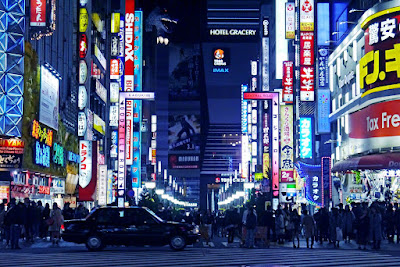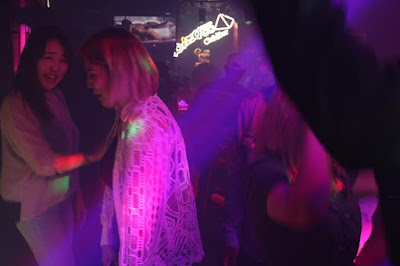Gujo Hachiman is a picturesque Edo period castle town situated along the Yoshida River deep in the lush green mountains of Gifu Prefecture. The riverside town has many claims to fame including its traditional summer Bon dance festival, mountaintop castle, pristine waterways, replica food samples and local crafts.
Recently, I had the chance to explore this charming town once again on a Samurai & Timber Tour organized by the good folks at
Nagoya is not boring and Nagoya City.
Here are some of the highlights from my visit.
Old Edo Period Townscape
Gujo Hachiman flourished as a prosperous castle town during the Edo period (1603-1868) with many merchants and artisans making the town their home in the historic district. The wooden houses and traditional architecture of this part of town have remained relatively untouched since that point in history, creating a feeling that you have taken a step back in time to the age of the samurai. This area is best enjoyed by taking a gentle stroll to soak up the amazing atmosphere and history. In 2013, the Japanese Government designated the area as an “Important Preservation District for Groups of Historic Buildings”.
 |
| Walking along the historic district |
Gujo Hachiman Castle
Gujo Hachiman Castle is Gifu’s very own “Castle in the Sky”. The mountain fortress is perched high atop Mt. Hachiman, overlooking the castle town below, and when the morning mist rolls in, the castle appears to be floating on a sea of clouds.
 |
| Gujo Hachiman Castle atop Mt. Hachiman |
Gujo Hachiman Castle was originally built in the 16th century with the current structure a 1933 reconstruction. It is Japan’s oldest rebuilt castle made of wood rather than concrete and is one of the most beautiful mountain castles in Japan.
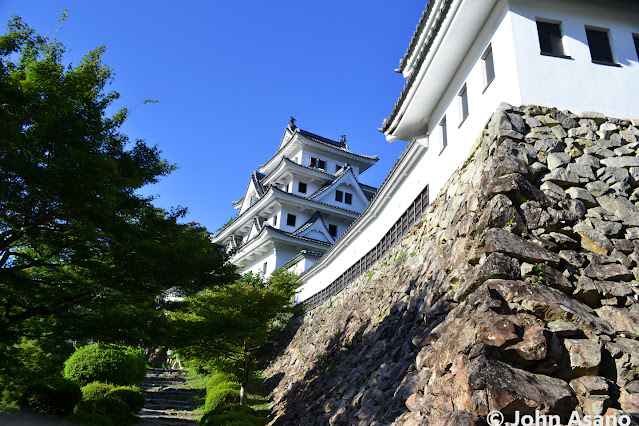 |
| The approach to Gujo Hachiman Castle |
 |
| The main castle tower |
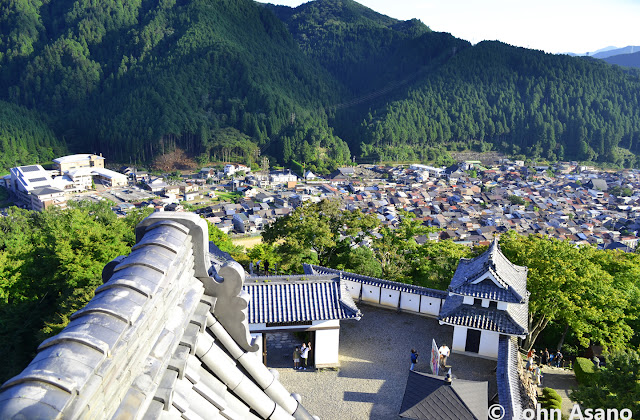 |
| Stunning view from the top of Gujo Hachiman Castle |
Gujo Odori
The Gujo Odori dance festival is one of the three most important traditional Bon dance festivals in Japan. Held over 30 festival nights in the summer from mid-July until September, it is also one of the most accessible. The locals and visitors alike can enjoy dancing until late at night or even until the wee hours of the early morning during Obon in mid-August. Gujo Odori consists of 10 dances and corresponding songs that are easy to learn, making it an event that everyone can join in and enjoy.
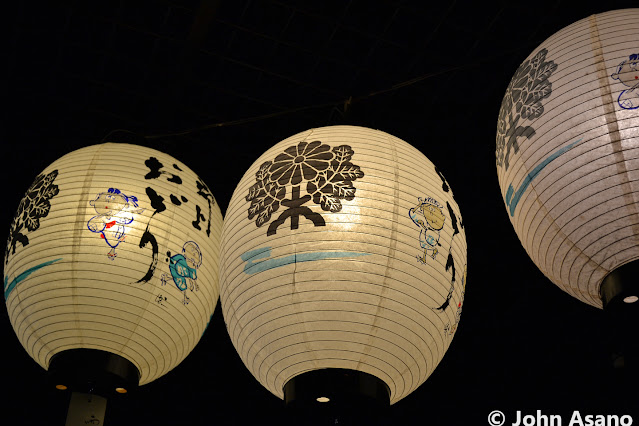 |
| Lanterns for Gujo Odori |
The traditional dance started over 400 years ago when the local daimyo, Endo Yoshitaka (1550-1632) organized a massive street party to bring all the people of his domain together regardless of rank or social position to harmonize and bond. What a great idea!
 |
| One of the traditional dances at Gujo Odori |
 |
| The music and songs for Gujo Odori are performed live |
The best way to fully experience Gujo Odori is to wear a yukata (light summer kimono) and a pair of geta (traditional wooden sandals). Take some time to explore the enchanting streets of the historic district before dancing the night away with the locals.
The Water City of Gifu
Gujo Hachiman is known as the “City of Water” due to its numerous canals, fountains, and waterways, which have been used since the 17th century by the locals for washing rice, vegetables and doing the laundry. The waterways are kept clean by the townspeople with the fresh water a source of pride for the town and its people.
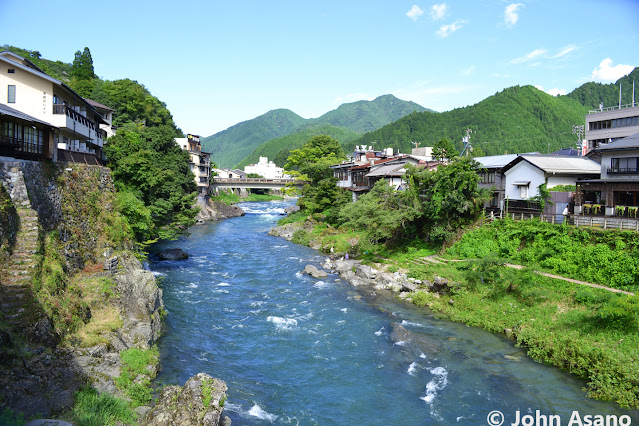 |
| The Yoshida River running through the town |
Sogi Sui Spring
A local symbol and treasure is Sogi Sui Spring, which has been designated as one of the “100 Best Waters in Japan”. The water for the spring is fed by the surrounding mountains and it is used by the locals for a variety of different purposes. The spring is divided into four sections, each with its own exclusive use. The first pool is for drinking, the second for washing rice, the third for washing vegetables, and the fourth for cleaning tools.
 |
| Sogi Sui Springs |
Igawa Lane
Another water spot is Igawa Lane, a 200-meter-long path with a waterway running alongside it. The crystal-clear stream used to be used by the locals for washing and cooling vegetables, but today, it is populated by a variety of koi (carp), which visitors can feed.
 |
| Igawa Lane |
Yanaka Mizu no Komichi
This water lane is a symbolic spot of Gujo Hachiman and one of its most picturesque locales. It is the perfect place to cool off in summer and take a leisurely stroll along its stone cobbled path. The name “Hachiman” literally means 80,000 in Japanese, and along this stone path, you will find 80,000 stones that represent the name of the town.
 |
| The 80,000 stone path at Yanaka Mizu no Komichi |
Gujo Hachiman Museum
The best place in town to learn all about Gujo Hachiman is the
Gujo Hachiman Museum. Located in a former tax office which dates from 1920, it has informative displays on the town’s spring water, history, traditional local crafts, and Gujo Odori Bon dance. You can even see demonstrations and practice the dances and songs featured in Gujo Odori. The dance is demonstrated several times a day by the staff allowing you the chance to pick up and practice your dance moves before the big event kicks off.
 |
| The Gujo Hachiman Museum |
 |
| Old Gujo Odori posters at the museum |
 |
| Interesting exhibits at the museum |
Traditional Crafts
Silk Screen Printing
Silk screen printing got its start in Japan in Gujo City. At
Takara Gallery, a retail shop and screen-printing studio, visitors can try printing their own colorful
tenugui towel, which they can then take home as a souvenir. Workshops are available in English with the kind and friendly staff making the experience one to remember.
Geta
One of the most important items along with a tenugui for doing Gujo Odori are geta. These traditional wooden sandals make the unique sound of Gujo Odori as they scrape the ground during the dance and are an important cultural heritage of Gujo Hachiman. You can pick up a pair at the
Gujo Mokuri Geta Shop on the main street to take home or use for the dance.
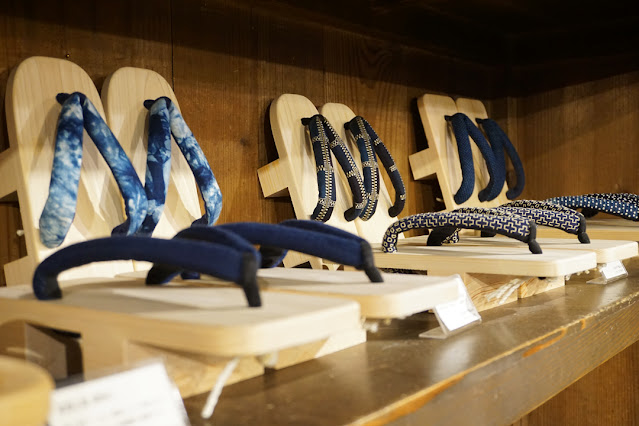 |
| Geta at Gujo Mokuri |
Local Food
Soba Noodles
Like most places in Japan, anywhere with good water is bound to have great tasting soba and Gujo Hachiman is no different. At
Soba Sho Matsui, the soba noodles are freshly made using the local spring water. We had a choice of two cold soba noodle dishes (wasabi or grated daikon) to enjoy for lunch on the hot summer’s day of our visit. The noodles were cool, refreshing and hit the spot!
 |
| Soba Noodles at Soba Sho Matsui |
Hoba Miso
Another delicacy of this part of Japan is Hoba Miso (beef and vegetables grilled with miso soybean paste on a magnolia leaf). This tasty dish originates from the Hida Takayama area of Gifu.
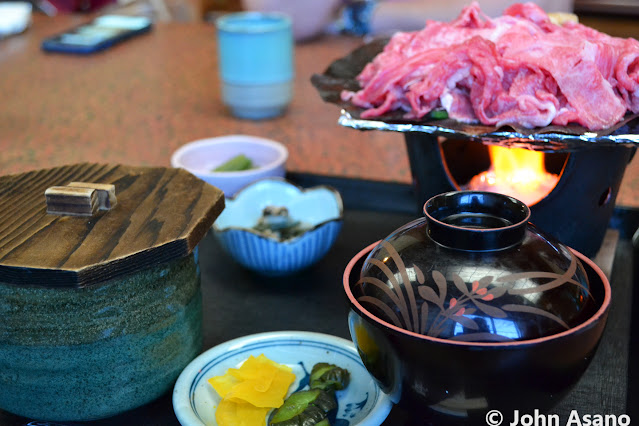 |
| Hoba Miso at Shinbashitei |
Keichan
This local chicken dish features chicken marinated in either soy sauce or miso which is grilled with vegetables on a hot plate.
You can try both Hoba Miso and Keichan at the traditional Japanese restaurant,
Shinbashitei, which is conveniently located next to the Shinbashi Bridge near the Gujo Hachiman Old Government Building Memorial Hall, which serves as the tourist information center as well as a souvenir shop.
 |
| Shinbashitei restaurant |
Food Samples
Did you know that Gujo Hachiman is the birthplace of those cool plastic food samples that you see in restaurant windows across Japan? The small town produces over 60% of all food replicas found in Japan, and you can try your hand at making one at
Sample Kobo. Here, visitors can buy a food replica souvenir or join a workshop for a hands-on experience of creating a piece of tempura or a cup of ice cream.
How to Get to Gujo Hachiman
From Nagoya Station, take the JR Tokaido Line to JR Gifu Station. The easiest way to get to Gujo Hachiman from JR Gifu Station is via a highway bus which costs ¥1,550 (one-way) from Gifu.
Wrap Up
Gujo Hachiman is an authentic small town in Japan that offers visitors a rare opportunity to see, experience, and be part of, a traditional way of life that has changed little in centuries.
Watch out for our next article where we head to Inuyama in Aichi Prefecture for day 2 of the tour followed by day 3 in Nagoya. If you want to book your own epic Samurai & Timber tour of Gujo Hachiman, Inuyama and Nagoya, visit the
Nagoya is not boring website.
 |
| The riverside town of Gujo Hachiman |


















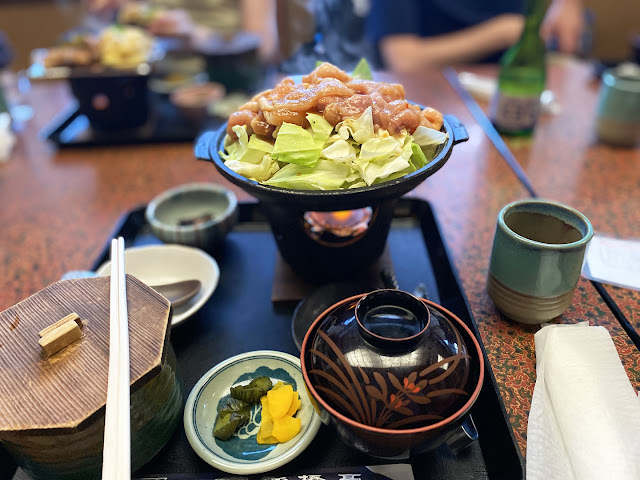




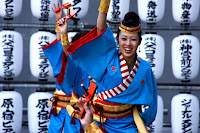






.jpg)
.jpg)
.jpg)
.jpg)




